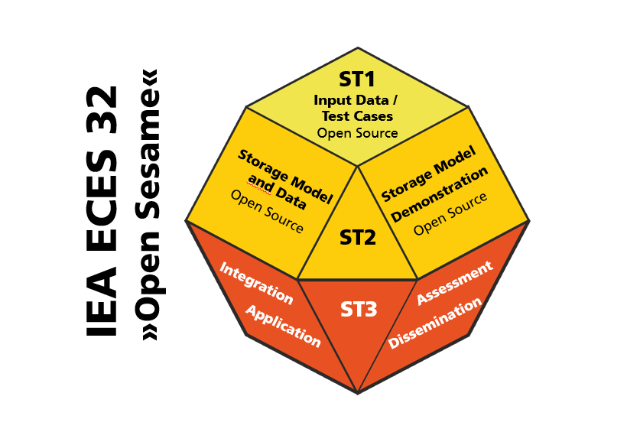Fraunhofer UMSICHT
International research team develops open source model for energy storage
The energy system is changing. Variable energy production, decarbonization, decentralization and cross-sectoral approaches call for innovative storage systems to balance demand and production. In order to develop such energy storage systems, models for operational or structural optimization and for the evaluation of storage systems are needed. The problem: There are still no uniform, scientifically validated open source models for electrical and thermal energy storage systems that can be used to solve technical, economic and regulatory problems. An international research team led by the Fraunhofer Institute for Environmental, Safety, and Energy Technology UMSICHT wants to change this.

"Our overriding goal is to understand and optimize the role of the various energy storage technologies in the future energy system by means of modeling and simulation," summarizes Prof. Christian Doetsch, Division Director Energy at Fraunhofer UMSICHT. "The end result should be an internationally developed, generic open source ecosystem for energy storage models and data sets that can be applied by anyone worldwide or used for further research". The framework for this work is the project "Open Sesame – Open Source Energy Storage Models", carried out together with the International Energy Agency (IEA).
15 project partners from Germany, Switzerland, South Korea, Denmark, Canada, Belgium, France and Portugal are bringing together their expertise. In the next three years, they want to achieve the following: open source models for thermal and electrical energy storage, common open source databases for different countries and the exemplary integration of the models in simulation and optimization software.
On the way there, the international scientists are looking at various storage media. These include not only the obvious ones such as lithium-ion batteries, but also others such as compressed air storage systems, redox flow batteries, and thermal accumulators such as hot water tanks and phase change materials. "This will be quite a challenge," says Christian Doetsch. "After all, thermal and electrical energy storage systems are based on structurally very different models: While some are often very specially designed and highly integrated into a system or plant, others are usually stand-alone solutions." This makes it all the more important that international experts from both fields come together at Open Sesame and contribute the various international applications and system designs to the project.
FUNDING INFORMATION
The project "Open Sesame – Open Source Energy Storage Models" is funded by the Federal Ministry of Economics and Energy (BMWi) within the framework of the joint project "Sesame Seed".
THE PROJECT PARTNERS
- DLR German Aerospace Center, Germany
- Bern University of Applied Sciences, Switzerland
- KIER Korea Institute of Energy Research, South Korea
- EMD International, Denmark
- CSEM Swiss Centre for Electronics and Microtechnology, Switzerland
- NRC National Research Council of Canada, Canada
- Carleton University, Canada
- Aalborg University, Denmark
- Paul Scherer Institute, Switzerland
- VITO Flemish Institute for Technological Research, Belgium
- ISQ, Portugal
- Steinbeis SOLITES, Germany
- University of Calgary, Canada
- CETHIL, Center for Energy and Thermal Sciences of Lyon, France